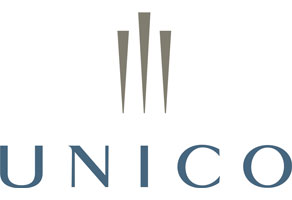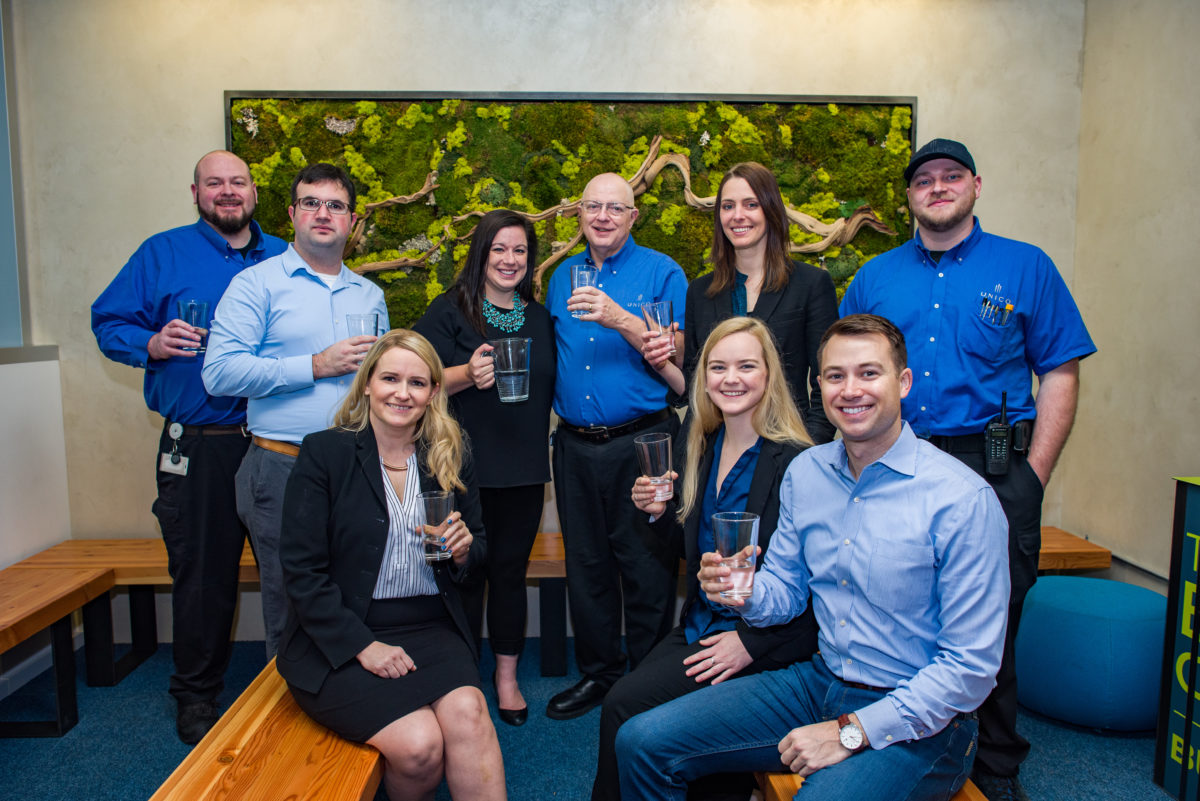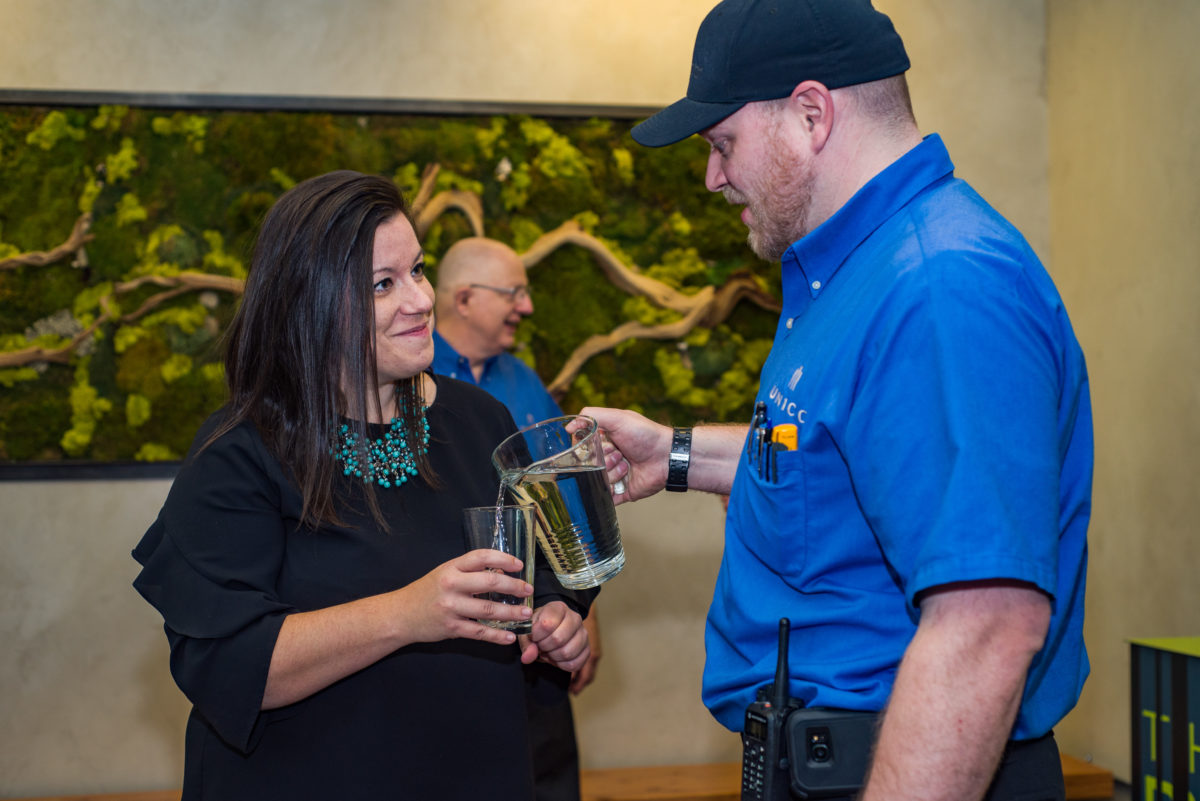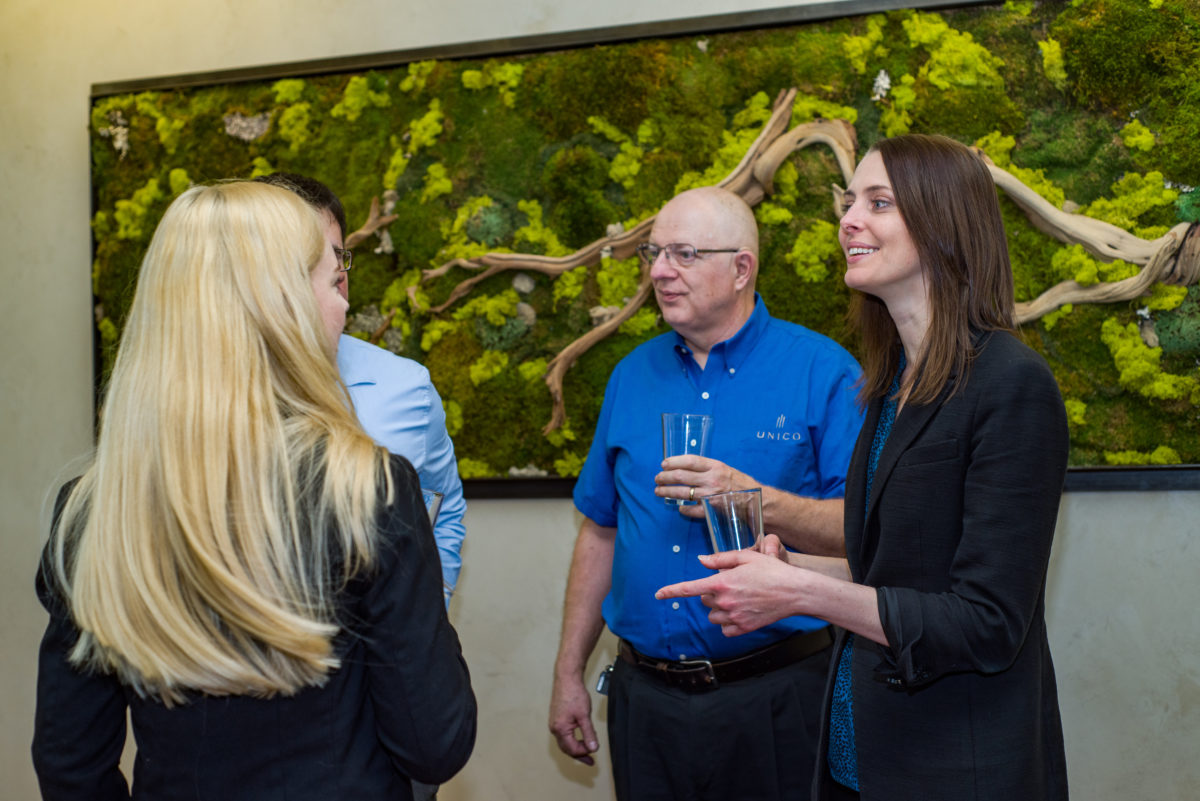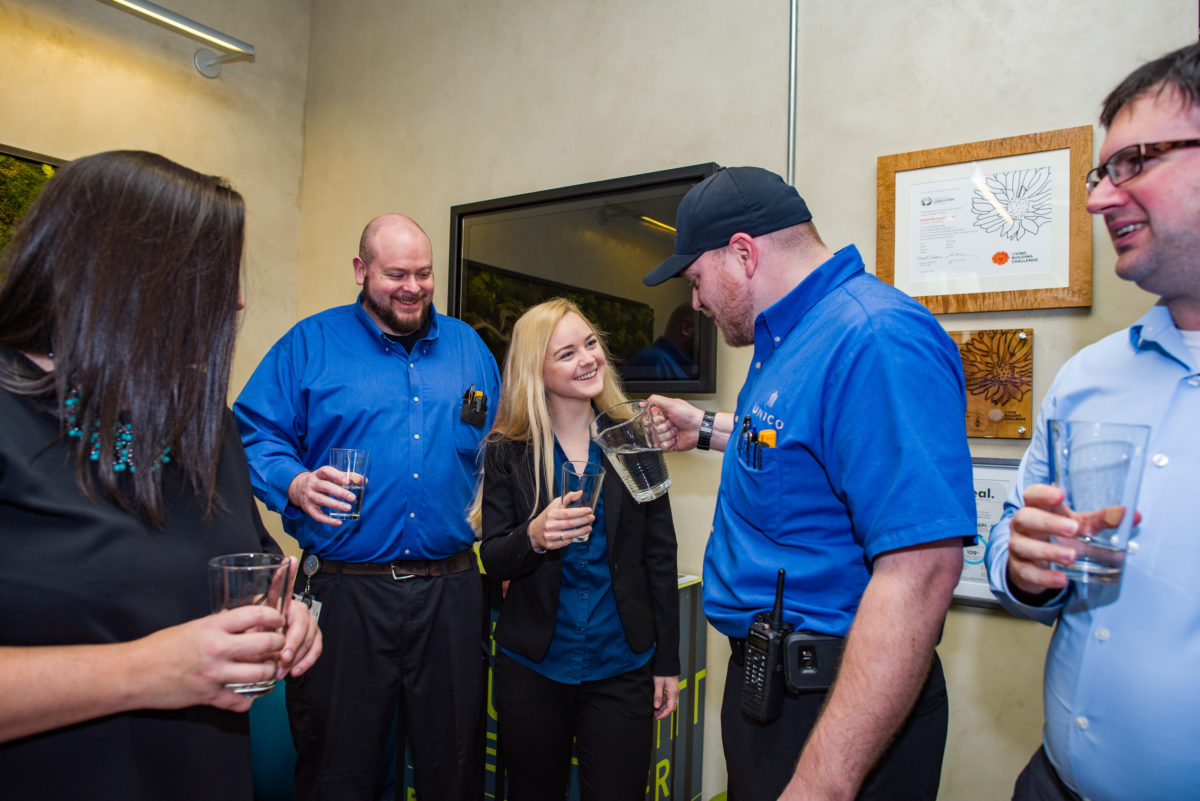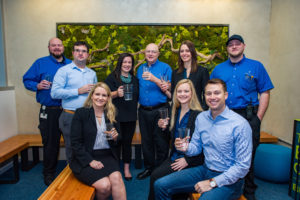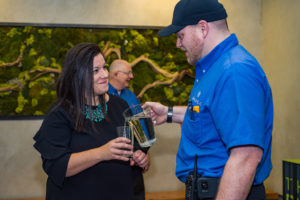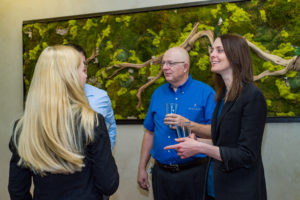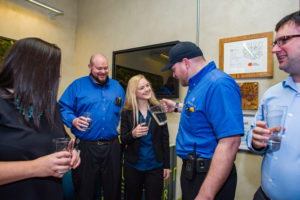Unico property team conducted daily testing of water as part of a six-month pilot program
SEATTLE (November 27, 2018) – It isn’t often that people would gather to celebrate an office building’s water. But for this team of property managers and engineers from Unico Properties, the Bullitt Center’s drinking water was worth celebrating. On Oct. 22, 2018, the Bullitt Center became the first office building in the world to produce its own potable water when its rainwater-to-potable water system went into full operation.
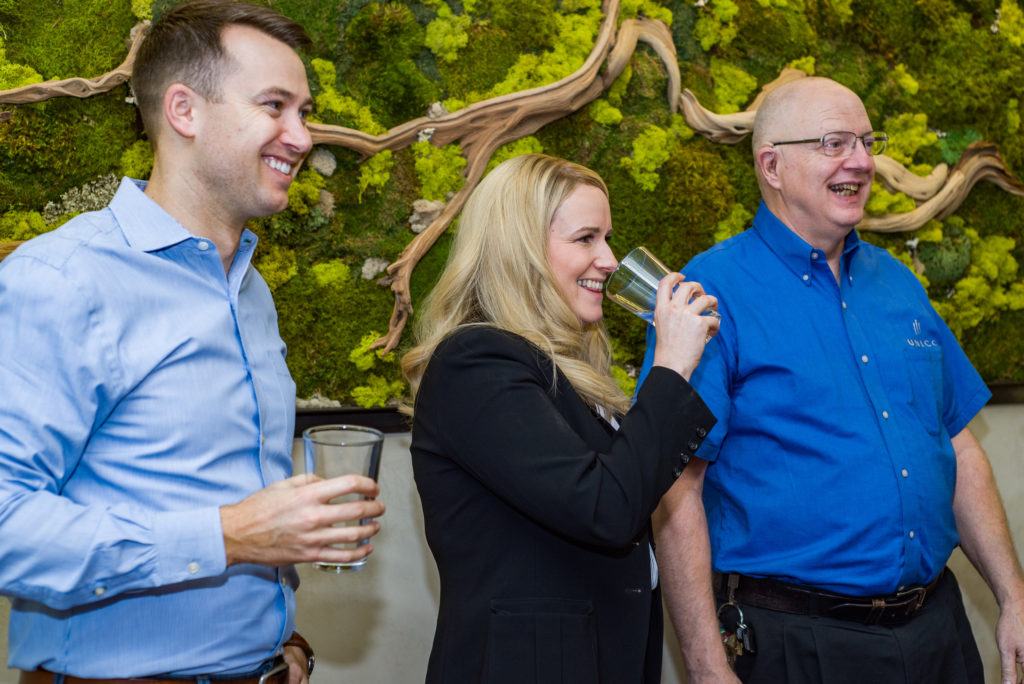
They gathered that Tuesday before Thanksgiving at the Bullitt Center for a group photoshoot to commemorate their team’s achievement. It was smiles all around as Unico Director of Real Estate Services Chrissy Schrader congratulated everyone present.
“After years of set back and successes, I’m so proud of my team and what they have accomplished,” Schrader told the small group as they sipped rainwater made by the building’s system. “This was a dream for the Bullitt Foundation and through the actions of this group, we have achieved something you just don’t see in our industry.”
Managed by Unico since 2014 for the Bullitt Foundation, the Bullitt Center is a 6-story, 50,000 square feet commercial office building located in the Capitol Hill neighborhood of Seattle. It is one of the world’s greenest buildings featuring an array of sustainability highlights such as a toilet composting system that only requires about a quarter cup of water mixed with biodegradable soap to flush, a 56,000-gallon rainwater cistern, and 14,303 square feet of solar panels that provide more energy than what the Bullitt Center uses.
In 2015, it earned “Living Building” certification from the International Living Future Institute after the building met rigorous standards in seven areas set by the organization including water use and energy consumption.
While the treated rainwater sloshing in the property team’s glasses that day might have been from last week’s rain, it took five years, numerous obstacles, cooperation with multiple government agencies, and a six-month pilot program to get the rainwater-to-potable water system approved and fully operational.
Regulatory setbacks on the way to net positive water
Water is both priceless and undervalued. For a compound that sustains all life, water is paradoxically underpriced and therefore wasted. And waste we do to the tune of 1 trillion gallons a year in households across the United States, according to Environmental Protection Agency (EPA).
Office buildings are using on average 20 gallons of water per square foot a year, according to the Energy Information Agency (EIA). The EPA estimates that 200-person buildings can save at least 230,000 gallons of water a year by adopting technologies that reduce water use. The Bullitt Center is ahead of its time, using a combination of bleeding edge sustainability features and practices to reduce water consumption to just one gallon of water per square foot per year, 95% less than a standard office building.
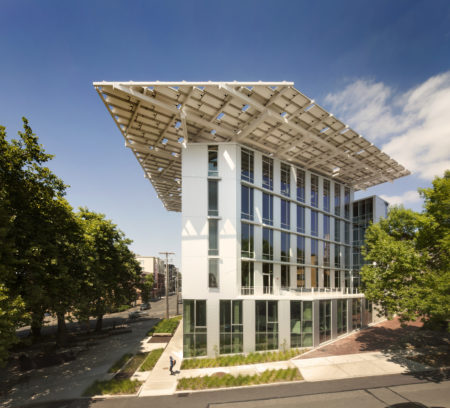
A rainwater-to-potable water system had been in place at the Bullitt Center since construction including the 56,000-gallon cistern in the basement. It was the intent for the Bullitt Center to achieve net positive water—as defined by Living Building Challenge—by combining its already stringent water use with a water system that captures and treats rainwater for all purposes in the building, including drinking. However, it had never been tested against the myriad of regulations governing drinking water.
From the very beginning, the Center had encountered obstacles that stymied approvals requiring expensive redesigns of the water system. In the state of Washington, everything that drinking water touches must have National Sanitation Foundation (NSF) certification, which includes the coating used on the solar panels on the rooftop. Because rainwater is touching these panels on their way to the rain catchment area, NSF certification was needed to make sure the coating will not contaminate the treated water. However, it was a challenge to source NSF certified materials that are also “Red List” compliant. The “Red List” is a list of hazardous chemicals the International Living Future Institute has identified as harmful to living things and the environment and must be avoided in order to meet the Living Building Challenge standards. In the end, the Bullitt Foundation was able to collaborate with their solar panel supplier to create NSF-certified panels that are also “Red List” compliant.
However, not all efforts to comply with the “Red List” proved successful. Chlorine, a hazardous chemical in the list, is required by the federal Safe Drinking Water Act (SDWA) as a residual disinfectant in drinking water. The Bullitt Foundation tried for several years to identify an alternative to the statutory requirement, including taking the request to the head of the EPA. In the end, no approval was granted and the Bullitt Center added chlorine to the system.
The Bullitt Foundation goes into greater detail about the regulatory framework they were up against on the way to approval in a white paper published on their website earlier this month.
Exceptional customer service from Unico’s property management and engineering team
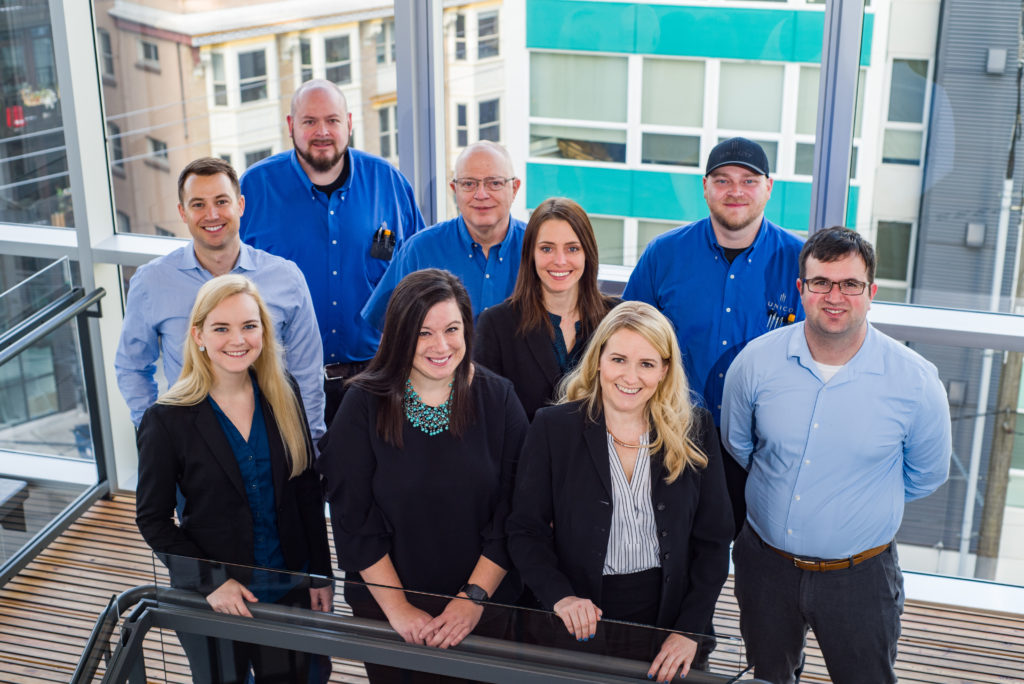
Throughout this whole process, Unico’s property management and engineering teams were partnering and working closely with the Bullitt Foundation, government agencies, and consultants, according to Unico Property Manager Kristen Halberg.
“From a building management and operations standpoint, there is a steep learning curve when taking on a building that composts its own waste in the basement and makes its own drinking water, among other innovations. There is a complexity and there are always additional challenges in balancing day-to-day management of a unique property while simultaneously working toward a significant sustainability milestone,” said Halberg.
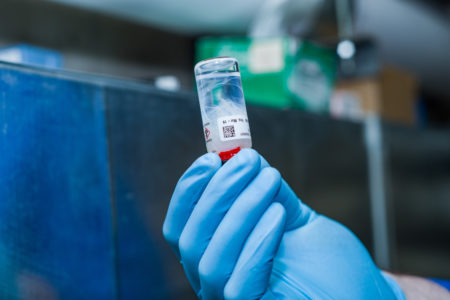
“It was a huge responsibility to learn this system and push it over the hurdles to completion. This is not a typical building, and property management teams are not trained as experts in drinking water,” Halberg added. “We all had a lot to learn, and I am really proud of this team.”
After gaining approval for the system design, the Unico property team and Gray & Osborne, the designers of the approved water system, worked closely with the Washington State Department of Health (WSDOH) to conduct a six-month pilot to rigorously test the redesigned rainwater-to-potable water system. The Bullitt Center also had to obtain a water operator permit, effectively becoming its own water district. The pilot program required Unico engineers to draw water from the cistern and produce purified and treated potable water which is then drained to simulate use. They were also required to conduct daily chlorine testing, according to Unico Chief Engineer Bob Minor.
“It’s never been done before in a major office building,” said Minor.
Unico engineers had to undergo additional training to be able to conduct the tests as part of the pilot program. Unico Building Engineer William “Buck” Dumont and Unico Lead Engineer Jason VanSlyke conducted the daily tests during the six-month pilot.
The pilot program successfully concluded on Sept. 17, 2018.
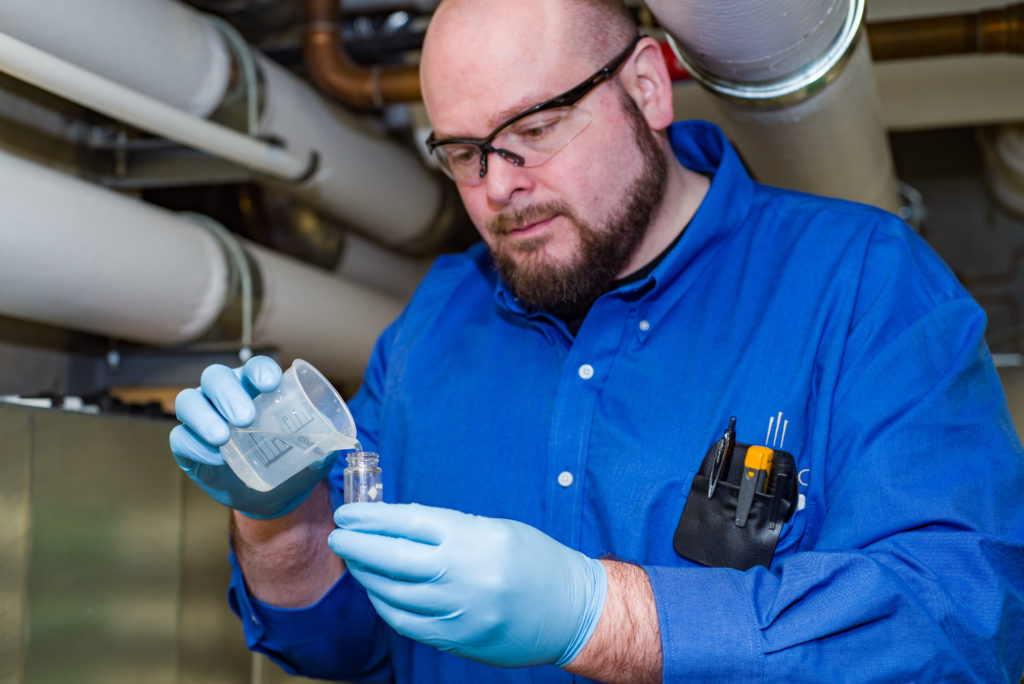
On Oct. 22, 2018, the Bullitt Foundation and the Unico property team received the approval letter from the WSDOH. As a condition of the approval, the Bullitt Center is required to conduct daily chlorine tests of its potable water which Unico engineers still conduct three times a week. The rest of the week, a WSDOH-certified third-party water operator conducts the additional tests. This operator is also responsible for producing the potable water.
The three-page letter from WSDOH went into great detail summarizing the post-approval requirements, credits, and applicable fees. But to the Bullitt Foundation, the consultants, and Unico’s hard-working property and sustainability teams, only eight words mattered that day: “This project may now be placed in service.”
Acknowledgements
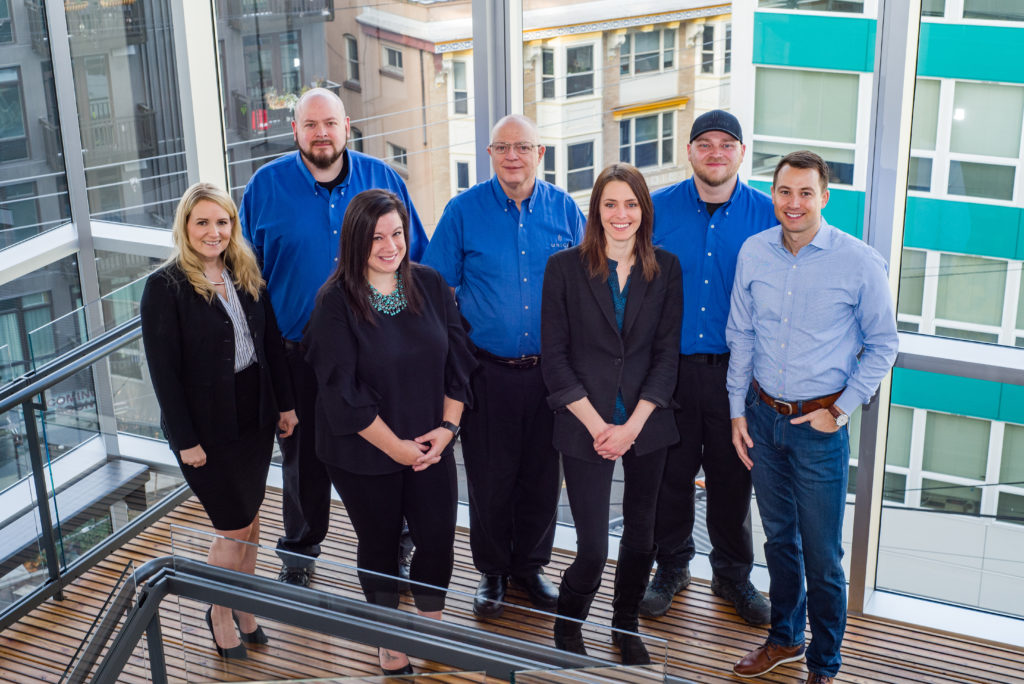
Below is the list of Unico employees who contributed to the success of the Water District:
Property management:
- Chrissy Schrader, Director, Real Estate Services
- Kristen Halberg, Property Manager
- Megan Osenbrock, Property Manager
Engineering:
- Bob Minor, Portfolio Chief Engineer
- Jason VanSlyke, Lead Engineer
- William Dumont, Building Engineer
Sustainability:
- Brett Phillips, Vice President, Sustainable and Responsible Investments
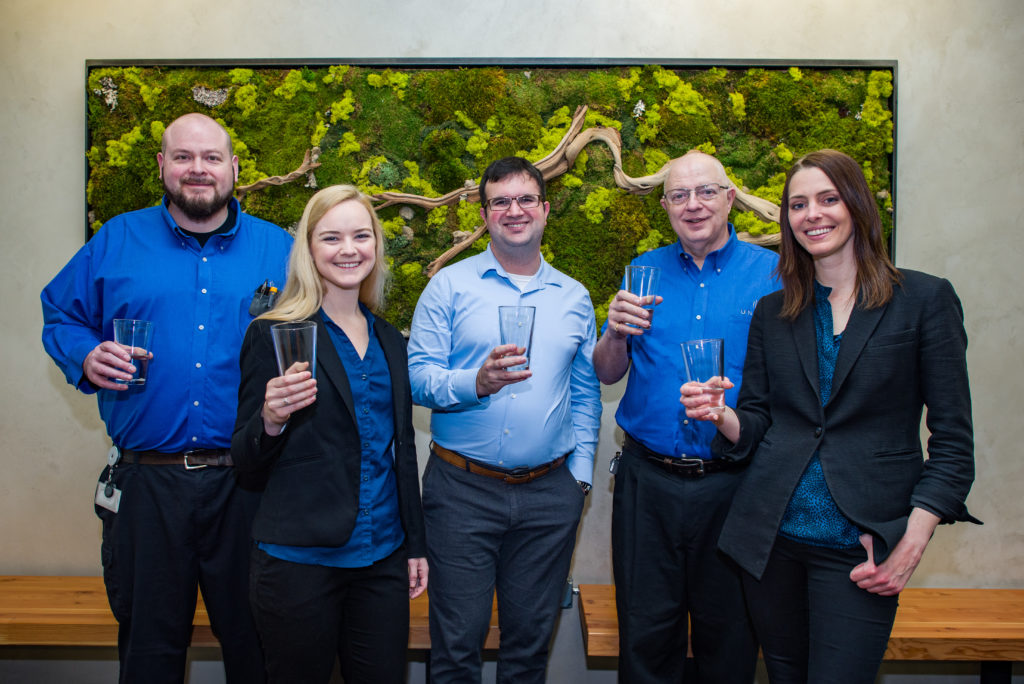
Below is the current Property Management team who will manage this operation going forward:
Property management:
- Chrissy Schrader, Director, Real Estate Services
- Kristen Halberg, Property Manager
- Hazel Morris, Property Administrator
- Philip O’Leary, Tenant Services Coordinator
Engineering:
- Bob Minor, Portfolio Chief Engineer
- Jason VanSlyke, Lead Engineer
Further reading
- Learn more about Unico’s sustainability achievements including the Bullitt Center in our sustainability investment case study.
- Read this in-depth white paper regarding the Bullitt Center’s rainwater-to-potable water system.
- Curious about the Bullitt Center? Read about the building’s bleeding edge sustainability technologies on their website.
- Read about the Living Building Challenge on the International Living Future Institute’s website.
